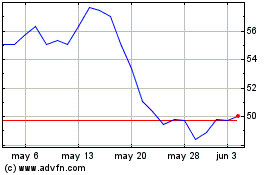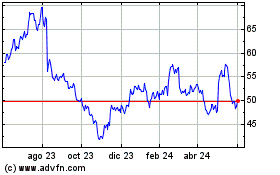Care.com’s 2024 Cost of Care Report, released today,
found that on average, parents who responded spend 24% of their
household income on childcare with nearly half (47%) spending more
than $18,000 in 2023. While this represents a slight drop from 27%
in last year’s report, it remains more than three times the 7%
deemed affordable by the U.S. Department of Health and Human
Services. Additionally, and meaningfully, household income is not
the only source of funding parents are using to pay for childcare.
More than one-third (35%) of respondents are dipping into their
savings, on average exhausting a staggering 42% of their savings in
2023, leaving them with little financial flexibility.
The 11th annual report, which comprises survey results of 2,000
parent respondents, also provides some of the first public data on
the impact of the childcare cliff, which marked the expiration of
pandemic-related federal subsidies for childcare in September 2023.
The findings reveal that nearly 40% of respondents (39%) are
already paying more because their care provider has been impacted
by the loss of funds. Additionally, nearly 80% of respondents (79%)
anticipate being impacted by the childcare cliff in 2024 with 54%
of those concerned expecting their childcare expenses to increase
by more than $7,000 this year as a result.
With financial pressure continuing to mount on parents while the
availability of childcare shrinks, it is not surprising that
childcare is a top priority for parents in the upcoming
Presidential Election, with an overwhelming 88% of respondents
saying a political candidate’s position on childcare access and
affordability will influence their vote.
“Within the first five years of their child’s life, parents are
being forced into a financial hole that is nearly impossible to
climb out of,” said Brad Wilson, CEO of Care.com. “A healthy
economy depends upon the ability for people to save and spend, but
given the crushing weight of childcare costs, those pillars are
crumbling. The childcare crisis should be a major red flag for
everyone, not just parents. It is a systemic failure that will
impact our nation’s economic growth, and that affects us all.”
Highlights from the 2024 Cost of Care
Report:
Care.com National Average Weekly Rates in 2023*
- Weekly nanny cost: $766 (up 4% from $736 in 2022).
- Weekly daycare cost: $321 (up 13% from $284 in
2022).
- Weekly family care center cost: $230 (up 0.4% from $229
in 2022).
- Weekly babysitter cost: $192 (up 7% from $179 in
2022).
* Infant rates except for babysitter, which is not age limited.
Rates for toddlers, after school sitters, as well as multiple
children, can be found within the report.
Childcare Costs Are Depleting Household Finances:
On average, parents who responded spend 24% of their household
income on childcare with nearly half of respondents (47%) spending
more than $18,000 in 2023. While the 24% represents a slight drop
from the prior year’s 27%, income is not the only major source of
money parents are using to pay for childcare. More than one-third
of parents who responded (35%) are also using hard-earned savings,
on average spending up to nearly half of their savings (42%) on
childcare and 25% using more than two-thirds of their savings.
Given the reliance on savings to pay for childcare, it is alarming
that a staggering 68% of respondents have only six months or less
until their savings run out. Not surprisingly 37% of parents who
responded cite the cost of childcare among their top three
financial stressors.
The Childcare Cliff Impact:
More than three-quarters of parents who responded (79%)
anticipate they’ll be impacted this year by fallout from the
childcare cliff. For the majority (54%) of those concerned,
childcare costs are anticipated to increase by $600 or more per
month, which translates into an additional $7,000 or more spent on
childcare in 2024. In fact, nearly 40% of respondents (39%) are
already paying more because their daycare was impacted at the end
of 2023 by the loss of federal funding.
Cost is not the only issue with which parents are wrestling. The
cliff has also impacted availability of childcare with 43% of
respondents having a harder time finding a childcare provider
versus prior years.
The Limbo of Waitlists:
Irrespective of the cliff, in general, 65% of respondents have
spent time on a daycare center waitlist with 81% of them juggling
multiple waitlists simultaneously and 43% waiting four months or
longer. Since the cliff in September, 62% of waitlisted respondents
say centers have closed while they sat on their waitlists and 54%
have experienced waitlist extensions. The cost of waiting? More
than half of waitlisted respondents (59%) are dishing out an
additional $200 or more a week on care.
Parents Demand Solutions From 2024 Presidential
Candidates:
With rising costs and shrinking availability, it’s not
surprising that childcare is top of mind for parents this election
year. A majority of respondents (59%) say childcare access and
affordability policy is a top 3 priority issue that will impact
their 2024 voting decision with 22% saying it is their #1
priority. A staggering 88% of respondents say a candidate’s
position on childcare policy will influence their vote with 37%
saying these policy positions are very influential.
And families want answers. A whopping 91% say it is important to
them that childcare is discussed during the 2024 Presidential
Debates. In fact, childcare ranked second as the topic respondents
most wanted addressed during the debates, behind the economy and
ahead of healthcare, climate change, racial and social justice, and
immigration.
The full results of The 2024 Cost of Care Report,
including a state-by-state ranking of the most and least expensive
states for childcare, can be found here.
2024 Cost of Care Report Methodology
This sample of 2000 U.S. adults was surveyed between November 9,
2023 and November 12, 2023. All respondents are parents of children
14 years or younger and currently pay for professional child care,
confirmed by both consumer-matched data and self-confirmation. DKC
Analytics conducted and analyzed this survey with a sample procured
using the Pollfish survey delivery platform, which delivers online
surveys globally through mobile apps and the mobile web along with
the desktop web. Response completion rate was 75%, and only fully
completed responses were considered valid. No post-stratification
has been applied to the results.
Weekly rates for nanny, babysitter, after-school sitter, daycare
center, and family care center are based on 2023 advertised rates
by families posting jobs for caregivers on Care.com.
About Care.com
Available in more than 17 countries, Care.com is the largest
online platform for finding and managing family care, spanning
in-home and in-center care solutions. Since 2007, families have
relied on Care.com for an array of care for children, seniors,
pets, and the home. Designed to meet the evolving needs of today’s
families and caregivers, the Company also offers customized
corporate benefits packages to support working families at more
than 700 global clients, household tax and payroll services, and
innovations for caregivers to find and book jobs. Care.com is an
IAC company (NASDAQ: IAC).
View source
version on businesswire.com: https://www.businesswire.com/news/home/20240117644606/en/
Media: Mackenzie Nintzel Public Relations Associate,
Care.com mackenzie.nintzel@care.com
Jamie Gentges Public Relations Associate, Care.com
jamie.gentges@care.com
IAC (NASDAQ:IAC)
Gráfica de Acción Histórica
De Dic 2024 a Ene 2025

IAC (NASDAQ:IAC)
Gráfica de Acción Histórica
De Ene 2024 a Ene 2025
